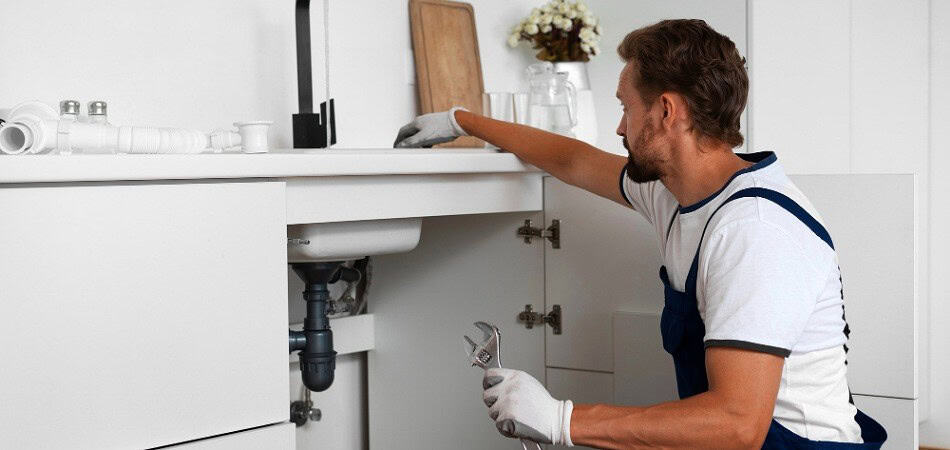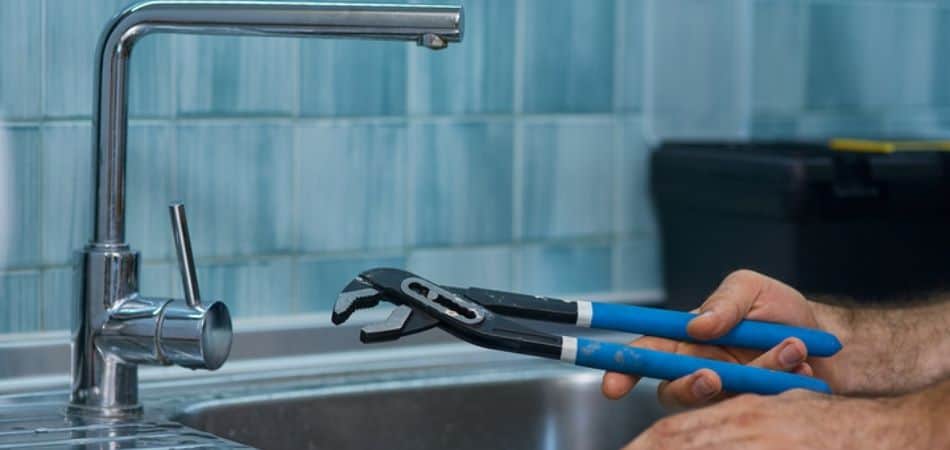There is no reason why you need to hire a professional to replace a kitchen faucet. Especially if you purchased the faucet from the best kitchen faucet supplier. Yes, there are a couple of things you need to consider and know before you can start with the replacement. This guide will lead you from finding the right faucet to removing and installing the new one.
Things to consider before replacing a kitchen faucet
Before anyone can install or replace a kitchen faucet, you need to consider a couple of things. You must know every step to do it correctly. Replacing a faucet can’t go wrong because the result will be a flooded kitchen.
The type of faucet you want for the replacement
For a beginner plumber, deciding on the right faucet can be hard. This is because there are many different kinds to choose from. You also need to know where to buy high-quality kitchen faucets. It is essential to look at the old faucet that has already been installed. Make sure that the new one can fit into the old holes made in the sink. Otherwise, it can become tough.
The good news is that because of the different types of kitchen faucets, it won’t be hard to find a modern one that will be replaced easily.

Your experience in installing a faucet
Before purchasing your wholesale kitchen faucet, you must consider your experience in replacing faucets. Some replacements can be hard to install and require some degree of experience. Any beginner should talk to the experts before buying any faucets.
Another essential thing is to consider the purpose of the new one. Different taps have different purposes, and you need to take the time to consider everything. Some of the newer taps have luxury add-ons that can be a great addition.
The tools you need to replace the faucet successfully
Have a look at the tools you have at home. If you have all the tools needed, then there isn’t a problem with doing the project. Please go through the tools and ensure they work correctly as well.
Step 1: Know and buy what faucet you need to install
Step 1 is where you need to consider the type of faucet you want to install. Talk to a kitchen faucet supplier if you are unsure about the different tap options. Look at the available space on and underneath the sink. Consider if your kitchen has just one or two sinks. Two sinks will require a different faucet than a single sink.
Things to look for when buying a faucet
It would be best to consider a few things before deciding.
- The type of basin that is installed in the kitchen. And the amount of space underneath for the installation.
- Different faucets have different installation holes. Your faucet might have holes different from the one you want to purchase. It can make a job harder if the holes aren’t the same.
- The different faucet valves. There are different ones, and you should know which one is best. You can choose between the ceramic-disk faucets, the cartridge-style faucets, the ball faucets, and the compression valves.
- The finishes and design style of the faucet.
- Consider useful additions that can be added to the new faucet, like a filtration system, sprayers, or a wall mount.

Step 2: Gather all the necessary tools you need beforehand
Getting all the tools for the job ready is one of the biggest steps. Without an essential tool, you cannot install the new taps without problems and delays. You can find all these tools at the kitchen faucet supplier. The most important things you will need include:
- Adjustable wrench
- Plumber’s putty
- Teflon tape
These tools might make the job easier:
- Pipe wrench
- Flexible connectors
- Fixings
- Screwdriver
- Bucket
- Flashlight

Step 3: Wear protective gear and switch off the water
Safety always comes first. You must wear protective gear, even if you think it isn’t necessary. Safety goggles and gloves will ensure that you are fully protected.
Before starting with the replacement, the first thing to do is to switch off the main water. This is an essential step if you don’t want your home flooded. If there are other water valves, you should close that as well. It’s also recommended that you open the taps to ensure all water is out of your water system. Even with the main water valve closed, there is still water in the house system.
Step 4: Start removing the old faucet
Have a close look at the old faucet before removing the old one. See where you need to start with the removal process. There are a couple of things to remove before it is successfully removed. Start under the basket and remove the water connections from the faucet. Remember to place a bucket under the sink to catch water still in the taps.
Sometimes, the old taps can be hard to remove. It might be rusted or stuck to the sink. In this case, you might want to use a lubricant designed for this purpose. Spray the lubricant where needed and leave it overnight. Sometimes, it is best to add lubricant to the faucet the day before the replacement. This is to ensure that you don’t have any delays that can mean going without water.

Step 5: Clean the area where the old faucet was
Step 5 is where you need to clean the areas where the old faucet was installed. You can find cleaners at the place where you buy kitchen faucets as well. There is always some debris around the holes when the taps are removed. The foaming tape under the taps might be hard and need to be cleaned. You can ask the kitchen faucet supplier for tough stains and debris for the right cleaning detergents.
Most of the time, a household cleaner will clean this debris. It would be best to start with the installation without washing first. It can make the installation of the new faucet harder.
Step 6: Install the new faucet. Follow the guide you received
Read the instruction manual for installing the new faucet. Most people avoid this step because it isn’t hard to install kitchen faucets. However, depending on the make and model, it can become complicated with parts that don’t fit anywhere.
When you study the instruction manual and make sure about all the different parts, the wholesale kitchen faucets will be installed faster. Test to see if the taps will fit into the holes in the sink. If the holes are too small, you should consider enlarging the holes. Or, you can return the faucet and replace it with another one that will fit.
Start by inserting the tap through the top of the sink. Then, you connect all the other pipes and fixtures, and ensure you secure them tightly. A tap should not be loose and move around once it is installed. When you struggle with the installation, or you never have installed a new faucet, you might want to hire a plumber for the installation.
Step 7: Turn the water back on and check for leaks
The second last step is ensuring everything around the tap is closed and secure. You can now turn the water back on at the main water supply. Open the tap to see if the water is running through the taps. If not, you should turn off the water supply and see where you made a mistake.
It is also possible that you might get confused between the hot and cold water pipes. It is also a good idea to switch off the water supply and switch the two pipes so that they are installed correctly. When the tap is running successfully, you should check to see if there are any leaks. Even the smallest leak can cause serious damage over time, especially if your basin is made from wood or other material that can damage water.
Step 8: Clean around the faucet and put all the tools away
There is still one thing left to do. It would be best if you cleaned around the faucet. Ensure all the debris from removing and installing the new tap is clean. It would be best if you stored away all the tools and the package of the new faucet. You should return it in its original packaging for a refund or replacement if it is faulty.

FAQ about replacing a kitchen faucet
These are some of the FAQs that you might have about where to buy kitchen faucets and other installation questions.
Is it hard to install a kitchen faucet?
It can be difficult to install if you have no experience in plumbing. However, following the included guide will make installing it much more manageable. It’s recommended to read the instruction manual thoroughly before installing the faucet.
According to the kitchen faucet supplier, how long will it take to replace a faucet?
Removing and replacing a new tap can take up to an hour. There are things to consider when you have a limited amount of time. Different faucets require different installation methods. Some are just easier and faster to install than the other ones.
When should you replace an old faucet?
Depending on the make and model, faucets last about 15 -16 years. Suppose you maintain and look after the faucets. It is also essential to consider the quality of the taps you buy and insert. Cheaper ones will not last as long as the more expensive ones.
Repair or replace an old, broken faucet?
One thing to remember is that a faucet can’t just break. However, it can wear and tear throughout the years. And those repairs can be done. However, if the taps get broken or fail to work, a replacement is better than a repair. Once it’s broken, it will always break, and it can become a hassle to keep the faucet in good condition.
Conclusion
Replacing a faucet you bought from a kitchen faucet supplier isn’t as complicated as you might think, especially if you have the right tools and knowledge to replace it. The most important thing to remember when replacing taps is to turn off the water supply to the home. And make sure that you have all the tools at hand.
This guide and FAQ make it easier for anyone to replace their kitchen faucets without paying extra for a plumber to install them. The only question that is left is where to buy kitchen faucets.

